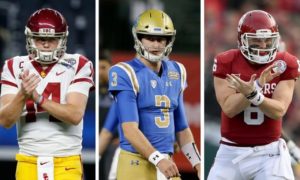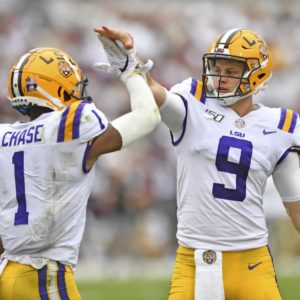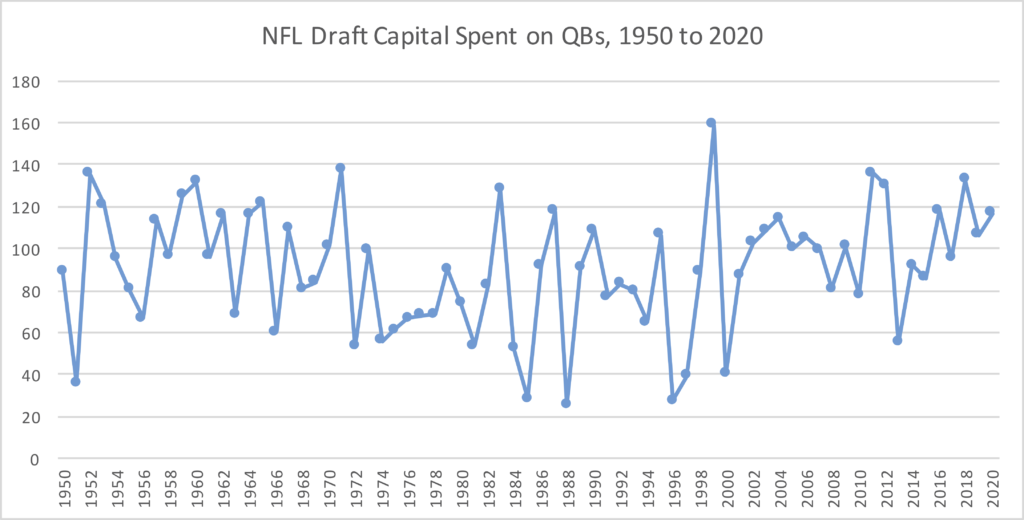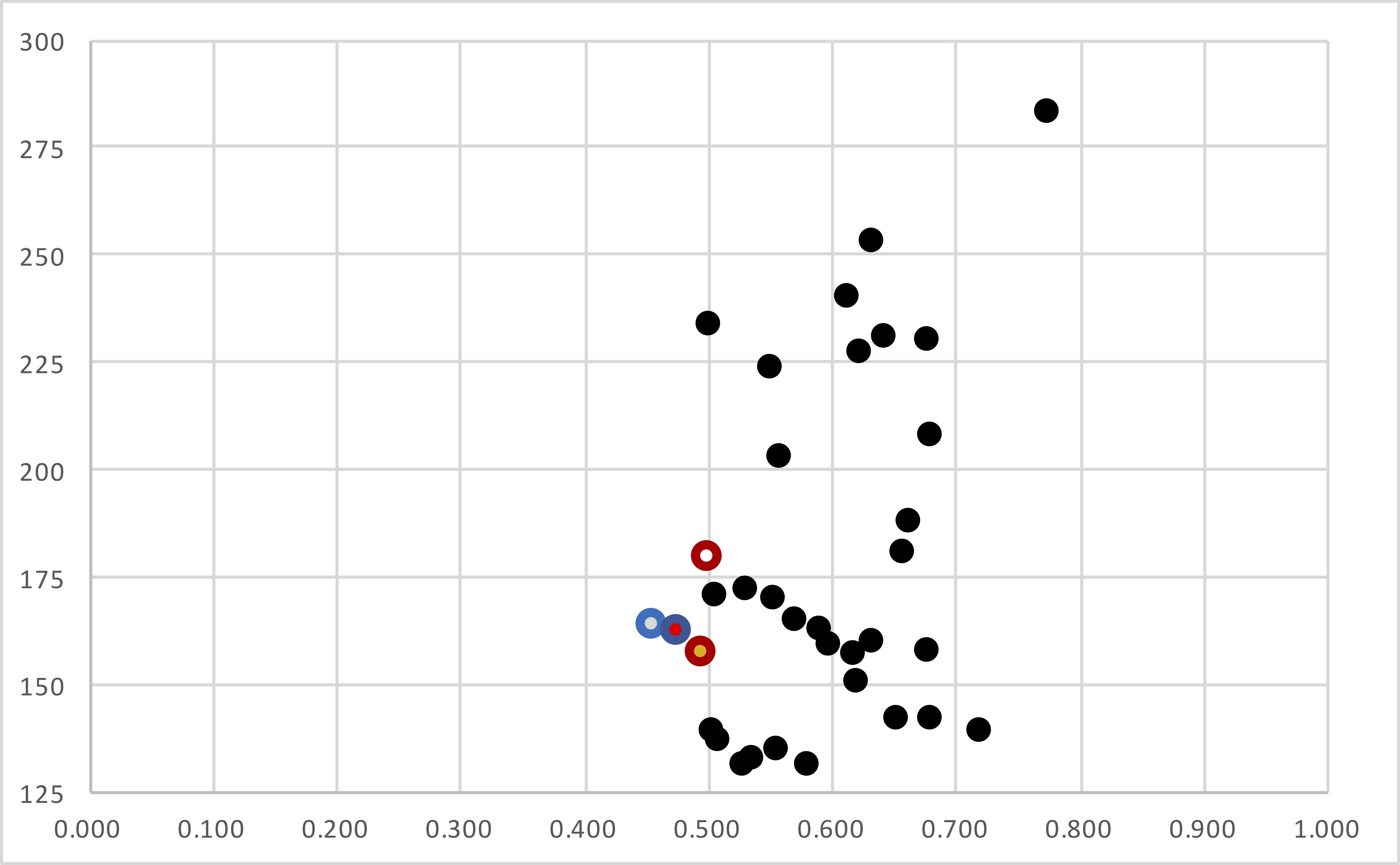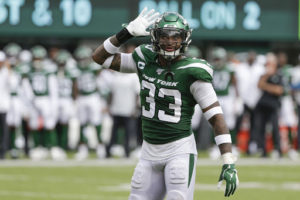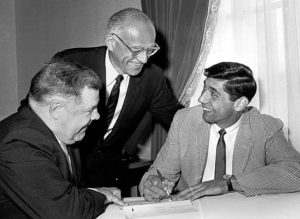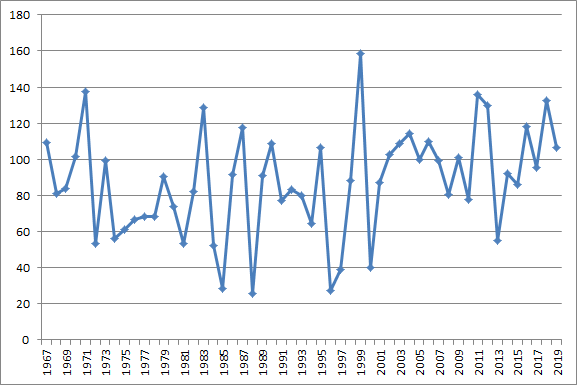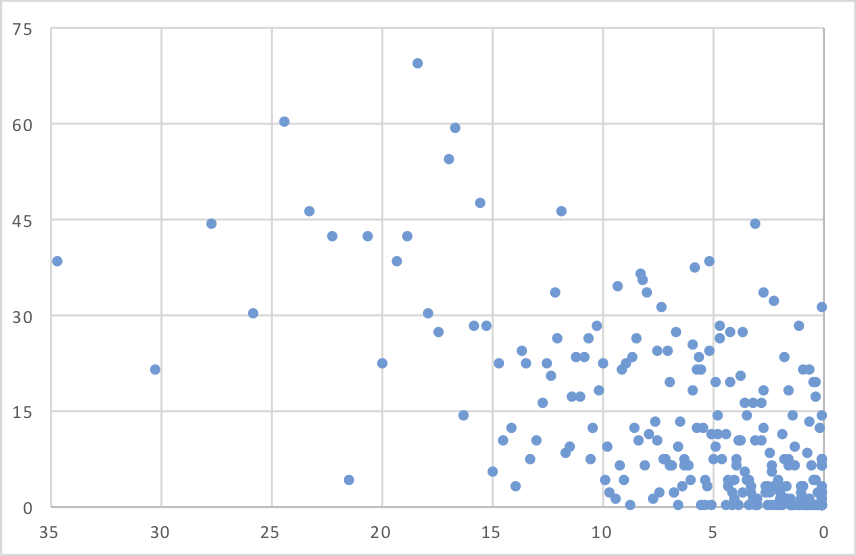In March 2013, the Steelers let Mike Wallace leave in free agency for Miami, which would give Pittsburgh a compensatory draft pick at the end of the 3rd round of the 2014 Draft. That seemed to encourage some bad drafting behavior. A couple of months later, during the 2013 Draft, Pittsburgh traded its own 2014 3rd round pick to Cleveland for the 111th pick in the Draft to grab safety Shamarko Thomas. Pittsburgh traded its own 3rd round pick next year for the Browns 4th round pick that year because the team needed Thomas.
Well, Thomas ended up busting, and the Steelers used the compensatory pick on Dri Archer, another bust. Pittsburgh wound up trading the 83rd pick in the 2014 Draft for the 111th pick in the 2013 Draft, which is rarely a smart move. For Cleveland, the team used that 83rd pick to move up in the 1st round and get Johnny Manziel, so the story doesn’t have a happy ending there, either. And the actual 83rd pick turned out to be Louis Nix III, which means everyone tied to these transactions (including the Dolphins) with a pair of snake eyes.
Why that context when talking about the 2019 Draft? Well, the Steelers are going to get a 3rd round compensatory pick in the 2020 Draft after letting Le’Veon Bell leave for the Jets in March 2019. That seemed to encourage Pittsburgh to freely give away its own 2020 3rd round selection…
1)
Steelers trade: 20th overall, 52nd overall (2nd round), 2020 3rd round pick
Broncos trade: 10th overall
Pittsburgh traded up Michigan inside linebacker Devin Bush, while Denver would take Iowa TE Noah Fant with the 20th pick. How much did Pittsburgh give up? Let’s assume the 2020 3rd round pick is valued at the 96th pick in this Draft, which is the last pick in the 3rd round (so this puts in some discount for losing a future pick rather than a current one). By my draft value chart, it means that Pittsburgh paid 153 cents on the dollar, sending 30.4 points of AV for 19.9 points of AV. By the traditional draft value chart, Pittsburgh gave up 104 cents on the dollar, a more reasonable sum.
The reality is that the Steelers likely viewed the 2020 3rd round pick as free money, courtesy of losing Bell. The price to move up was not out of the ordinary, but the ordinary transaction is a bad one for the team moving up.
2)
Packers trade: 30th overall, 114th overall (4th round), and 118th overall (4th round)
Seahawks trade: 21st overall
By my chart, Seattle did a solid job here, forcing the Packers to pay 141 cents on the dollar. By the traditional chart, the Seahawks were basically looking to get whatever they could to trade down, as Green Bay paid only 93 cents on the dollar! It is rare for the team trading up to pay so little, so this is a strong sign that it was a buyer’s market for moving up (is that a reflection of teams getting smarter or the talent distribution in this particular draft?)
Green Bay moved up for Maryland safety Darnell Savage, while Seattle would trade this pick again an hour later. This was probably a good trade for both sides, as the Packers were able to get the player they wanted while only giving up a pair of 4th round picks, and the Seahawks added a few more swings at the plate later on.
3)
Eagles trade: 25th overall, 127th overall (4th round), 197th overall (6th round)
Ravens trade: 22nd overall
Philadelphia moved up to draft Washington State tackle Andre Dillard, the second offensive tackle off the board. This was likely a necessity, as Philadelphia jumped Houston with the 23rd pick. On my chart, the Eagles gave up 127 cents on the dollar, while this was a near perfect match on the traditional chart (99.7 cents on the dollar). This is a trade that makes a lot of sense: Philadelphia didn’t have to overpay by much to make a trade that matched their needs perfectly.
4)
Redskins trade: 46th overall (2nd round), 2020 2nd round pick
Colts trade: 26th overall
Washington moved up to get Mississippi State edge rusher Montez Sweat, who was the 40-yard dash superstar this year. If we value Washington’s 2nd round pick as equal to the 64th pick in this year’s draft, the Redskins gave up 132 cents on the dollar for Sweat, who perhaps fell in the first round due to a misdiagnosed heart condition. By the traditional chart, this would be sending 101 cents on the dollar.
So this is a great trade for Washington if you view Sweat as a top-20 player and the 2020 2nd round pick as the 64th pick in this year’s draft. The concern, of course, is that the Redskins might be very bad next year. If this turns out to be, say, the 36th pick in the draft, and you apply no time value discount, the traditional chart would say Washington paid 140 cents on the dollar while my chart would say Washington paid 158 cents on the dollar.
It is always risky for a bad team to trade a future pick, but Sweat at least profiles as the sort of player you can understand trading up for, especially since the premium wasn’t that significant.
For Indianapolis? This was another smart way to add value.
5)
Giants trade: 37th overall (2nd round), 132nd overall (4th round), 142nd overall (5th round)
Seahawks trade: 30th overall
The Giants picked up the 132nd pick in the Odell Beckham trade and the 142nd pick in the Damon Harrison trade. Both of those trades were hard to defend on the merits, but now New York has muddied the ultimate analysis for those trades! By sending those two picks, along with the Giants early 2nd round pick, New York was able to get Georgia cornerback Deandre Baker.
By my chart, the Giants paid 140 cents on the dollar, but on the traditional chart, it was a trade of just 98 cents on the dollar. Again, teams often (mistakenly) view extra picks as free picks: here, at least for Giants fans, the price to move up was not very high.
6) Falcons trade: 45th overall (2nd round), 79th overall (3rd round)
Rams trade: 31st overall, 203rd overall (6th round)
By my chart, Atlanta sent 127 cents on the dollar to move up; by the traditional chart, Atlanta sent 106 cents on the dollar. The Falcons grabbed Washington offensive tackle Kaleb McGary, giving up two solid picks in the process. Still, this was not an egregious overpay, which is something we have seen in past years as teams try to trade back into the end of the first round. Last year, the Ravens moved up to the 32nd pick for Lamar Jackson, and in doing so, gave up the 52nd pick and a 2019 2nd rounder and also moved down 7 slots in the 4th round. Atlanta at least paid a cheaper price than that, but this was still a good way to grab some extra value by Los Angeles.

